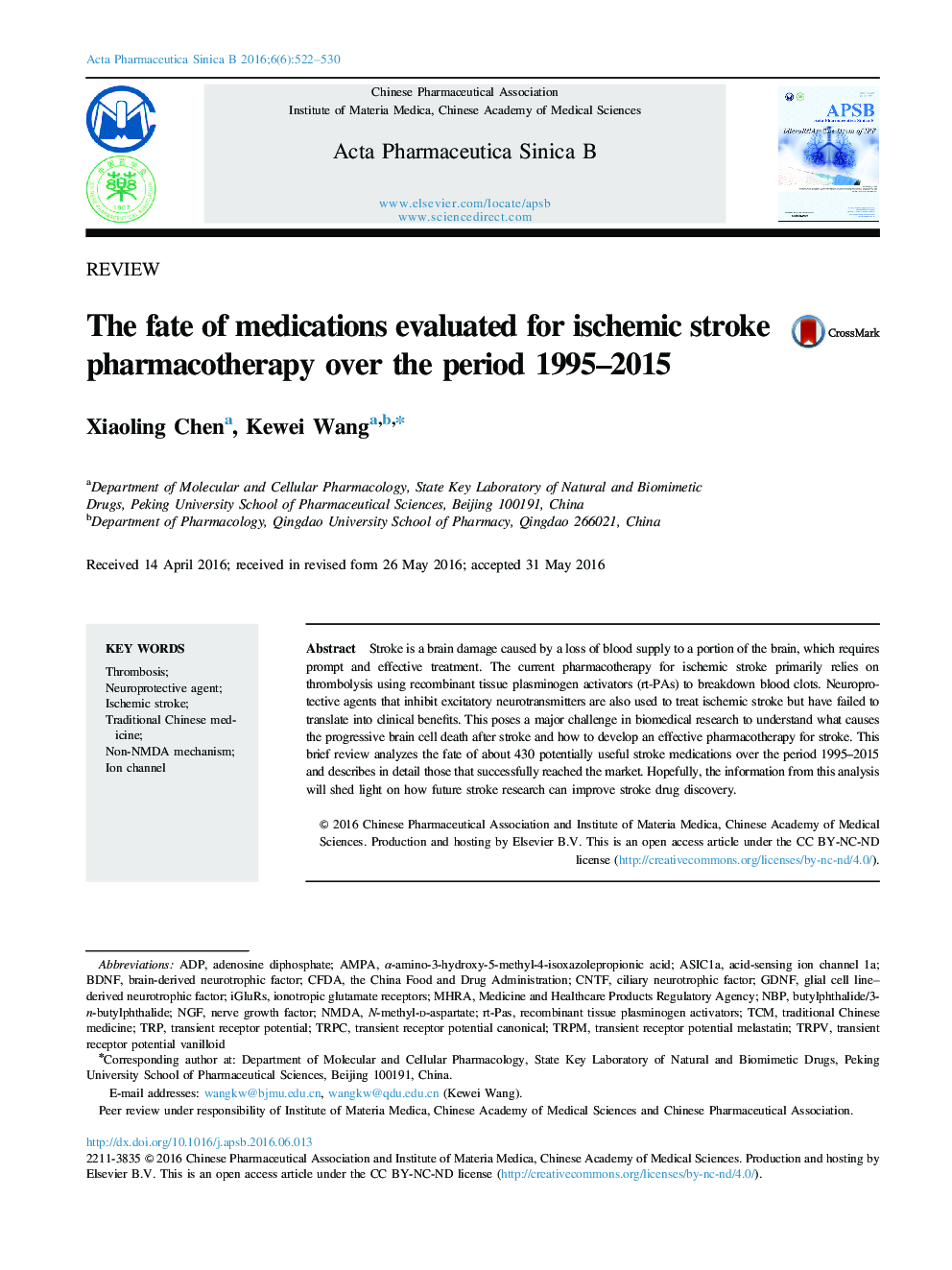| Article ID | Journal | Published Year | Pages | File Type |
|---|---|---|---|---|
| 5546644 | Acta Pharmaceutica Sinica B | 2016 | 9 Pages |
Stroke is a brain damage caused by a loss of blood supply to a portion of the brain, which requires prompt and effective treatment. The current pharmacotherapy for ischemic stroke primarily relies on thrombolysis using recombinant tissue plasminogen activators (rt-PAs) to breakdown blood clots. Neuroprotective agents that inhibit excitatory neurotransmitters are also used to treat ischemic stroke but have failed to translate into clinical benefits. This poses a major challenge in biomedical research to understand what causes the progressive brain cell death after stroke and how to develop an effective pharmacotherapy for stroke. This brief review analyzes the fate of about 430 potentially useful stroke medications over the period 1995-2015 and describes in detail those that successfully reached the market. Hopefully, the information from this analysis will shed light on how future stroke research can improve stroke drug discovery.
Graphical abstractThe fate of 430 drugs evaluated in treating ischemic stroke over the period 1995-2015 are is analyzed. Only 4% of them, classified as thrombolytics and neuroprotective agents, successfully reached the market whereas all N-methyl-D-aspartate (NMDA) receptor antagonists failed in clinical trials. This analysis reveals that targeting non-NMDA-mediated calcium overload may be a promising strategy for improving the pharmacotherapy of ischemic stroke.Download full-size image
